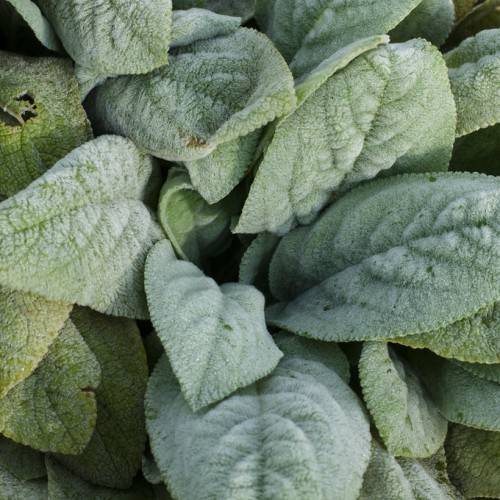
lamb's ear
Stachys byzantina 'Big Ears'
Also Known As - giant lamb's earsCycle:
Herbaceous Perennial
Watering:
Minimum
Hardiness Zone:
4 - 9
Flowers:
Flowers In Summer
Sun:
Full sun
Soil:
Rocky , gravelly , dry, Well-drained
Fruits:
Fruits In Autumn Ready In Fall
Leaf:
Yes
Growth Rate:
High
Maintenance:
Low
Care Level:
Low
watering
Lamb's ear (Stachys byzantina 'Big Ears') should be watered deeply and regularly. For best results, water thoroughly once weekly, allowing the soil to dry out slightly between waterings. In hot, dry weather, you may need to water more often. During the cooler months, however, reduce watering to every other week. When the soil is dry up to your first knuckle, it is a good indication that the plant needs water.
sunlight
Lamb's ear (Stachys byzantina 'Big Ears') is an herbaceous perennial that thrives in full sun to partial shade. It prefers bright, dappled sunlight and does best in a location where it receives 6 to 8 hours of sunlight each day. It is best to provide the plant with direct sunlight in the morning and afternoon, and a partially shaded area in the hottest part of the day. It is important to keep in mind that too much direct sunlight can be damaging for lamb's ear and that it can cause foliage to burn and weaken plants.
pruning
Lamb’s ear (Stachys byzantina 'Big Ears') should be pruned before the start of spring for best results. Pruning should be done by removing any dead, damaged, or diseased foliage. Additionally, the plants can be cut back to keep the growth of the plant to the desired size and shape. Formerly established plants can be pruned hard once a year, by cutting them back by 1 third of their height. This pruning should be done in the Early Spring, just before the new growth begins. In addition to this pruning, flowering stems should be pruned as soon as the flowers have faded. This will help keep the plant looking neat and tidy, and will also encourage new blooms. Lamb’s ear should not be pruned during the summer months, as this will reduce flowering potential and can be too hard on the plant.
